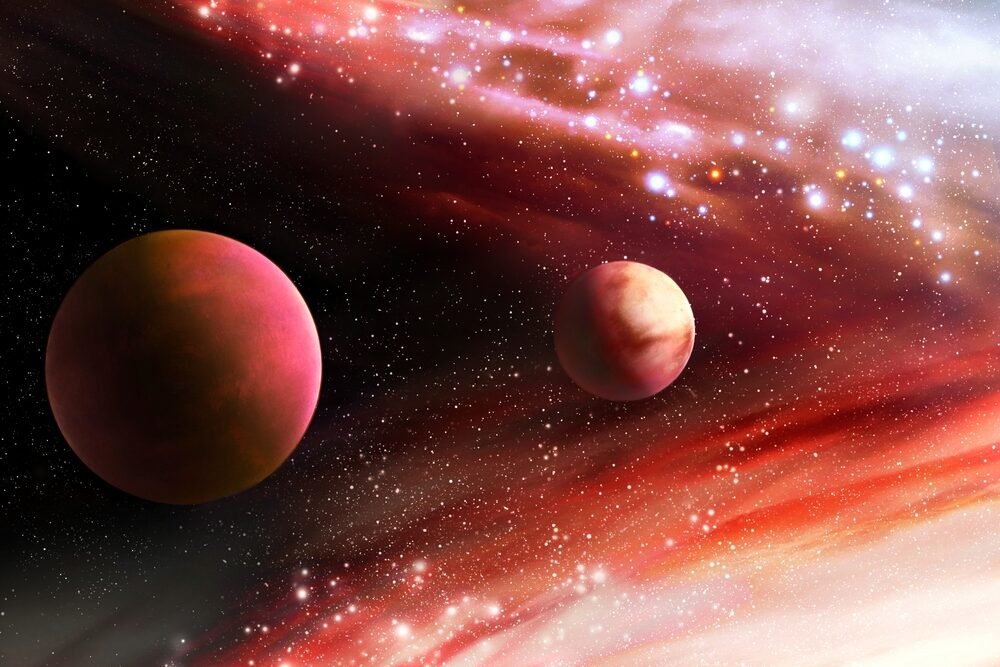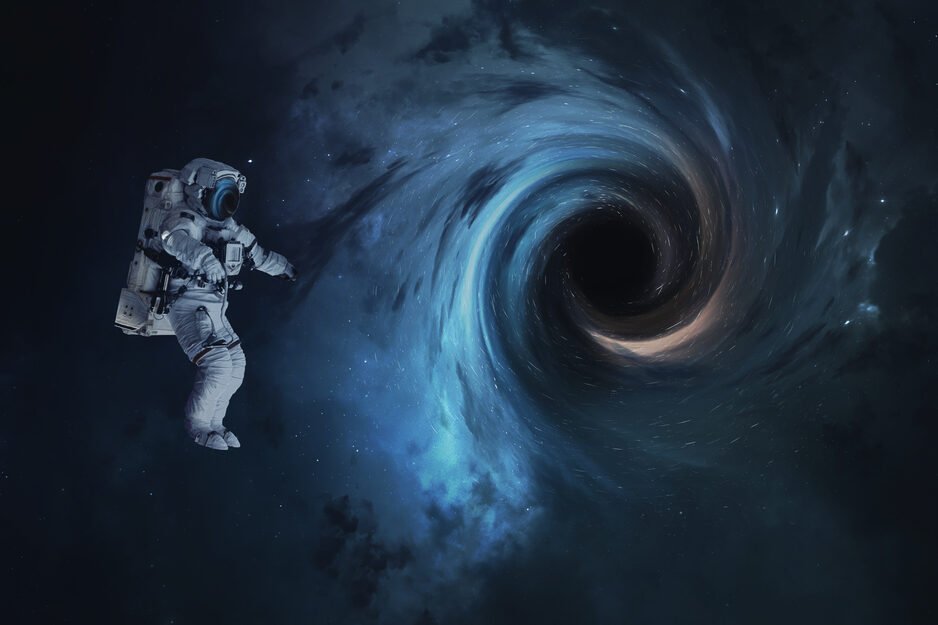We’re Finding More and More Habitable Planets

Not that long ago, we didn’t know if any planets outside our solar system even existed. Now, we’ve found thousands. Thanks to advanced telescopes like Kepler and TESS, astronomers have identified a growing list of exoplanets some of which are rocky, Earth-sized, and sitting in the “Goldilocks zone,” where conditions might just be right for life.
Experts in planetary science are especially excited about planets that orbit red dwarf stars, as they’re both common and stable over billions of years. These habitable-zone planets could have the right temperatures for liquid water, which is the first major requirement for life as we know it. Every new discovery narrows the search and gives us more precise targets. We’re not just guessing anymore — we’re zeroing in on the places most likely to host alien life.
Mars Still Holds Promising Clues
Mars may look barren, cold, and dusty now, but scientists have long believed it was once a much wetter and possibly more life-friendly planet. NASA’s rovers from Curiosity to Perseverance — have been drilling into Martian rocks and sampling soil in search of chemical signatures that could suggest life once existed there, or might even exist in microbial form today.
What’s especially promising are the findings of organic molecules and seasonal methane spikes, which some experts think could be tied to microbial activity below the surface. While there’s no proof yet, the possibility of past or present Martian life has kept our robotic explorers busy and inspired the idea of human missions. Mars might not be home to little green men, but it still might host ancient microbes buried in frozen soil — and that alone would be a history-changing discovery.
Moons Like Europa and Enceladus Could Be Even Better Bets
While planets get most of the attention in the search for extraterrestrial life, some of the most intriguing candidates are actually moons — specifically Europa (orbiting Jupiter) and Enceladus (orbiting Saturn). Both are icy on the outside but believed to have salty oceans hidden beneath their crusts. Those subsurface oceans might contain more water than all of Earth’s oceans combined.
Planetary scientists believe that if these moons have heat from internal tidal forces and chemical energy from their rocky cores, they could provide the same conditions that allow life to exist around deep-sea vents on Earth. Plumes of water vapor spotted jetting out of Enceladus suggest we might be able to sample these alien oceans without even landing. Missions like NASA’s Europa Clipper are already en route to help answer some of the biggest questions we’ve ever asked: Is there life swimming in the dark oceans of distant moons?
We’re Learning How to Read Alien Atmospheres
One of the most exciting developments in space exploration is our growing ability to study the atmospheres of distant planets. With tools like the James Webb Space Telescope, scientists can now analyze starlight that passes through an exoplanet’s atmosphere during transit. This technique allows them to detect specific gases that might signal life, such as oxygen, methane, or carbon dioxide in the right ratios.
Astrobiologists say that if we find certain chemical imbalances — like a combination of methane and oxygen without a non-biological explanation — it could point strongly toward biological processes. The technology isn’t perfect yet, and interpreting results is complex, but each new atmospheric reading gets us closer to knowing whether a distant world is alive. It’s like learning to read the “breath” of a planet across light-years, and with every scan, we sharpen our alien-sensing toolkit.
Radio Signals from Deep Space Still Raise Eyebrows
The idea of aliens sending us radio signals has captured human imagination for decades. While most of the signals we detect turn out to be natural or man-made interference, there have been moments that made scientists pause. The famous “Wow!” signal of 1977 is still unexplained, and newer mystery bursts called fast radio bursts (FRBs) occasionally spark questions about intelligent origins.
Researchers involved in the SETI (Search for Extraterrestrial Intelligence) program continue to scan the sky for signals that show patterns, repetition, or signs of artificial origin. Though we haven’t found anything definitive, the mere fact that we’re listening — and improving how we listen — keeps the possibility open. If a civilization out there is broadcasting, we might just be one right-tuned antenna away from picking up their call.
Life Might Not Look Like What We Expect

One of the biggest challenges in finding alien life is that we’re often looking for what we already know — things that look or behave like life on Earth. But scientists are becoming more open to the idea that life elsewhere could be completely different. It might not need water, carbon, or even the same energy sources. It could be silicon-based, live in sulfuric acid, or thrive in radiation-rich environments.
Astrobiologists are working to expand our definitions of habitability and reframe how we think about “life.” This shift opens up a much wider range of planets, moons, and conditions for exploration. It also means that we might have overlooked signs of life because they didn’t match our expectations. As our understanding deepens, the search grows broader, stranger, and even more exciting. After all, discovering alien life might be less about finding something familiar and more about learning to recognize life in its most unexpected forms.
Microbial Life Could Be Our First Discovery
When people think of alien life, they often imagine intelligent beings flying spaceships. But scientists believe that if we do find alien life, it will probably start with something much smaller and simpler — like microbes. Microbial life is incredibly resilient and can survive in extreme environments, from deep ocean vents to frozen tundras on Earth.
Astrobiologists focus much of their search on finding these tiny, hardy life forms first. If microbial organisms could evolve on Earth under harsh conditions, then it makes sense that similar simple life could thrive elsewhere. Finding alien microbes would still be a groundbreaking moment for humanity. It would answer the question of whether life is a rare miracle or a common feature of the universe. Even a single microscopic alien could change everything we thought we knew about biology and the possibilities for life beyond Earth.
Artificial Intelligence Is Helping in the Search
With the universe being so vast and data from space growing every day, scientists have turned to artificial intelligence to help speed up the hunt for alien life. AI systems can sift through mountains of telescope data, radio signals, and atmospheric readings much faster than any human team could manage. They look for patterns that might hint at planets, biosignatures, or even unusual signals from space.
Experts in astrobiology say that AI is not just about crunching numbers. It is teaching us to find the unexpected. Machine learning can uncover strange anomalies that humans might overlook because they do not fit our existing theories. In a search where the answers could be completely unlike anything we have seen before, having AI as a partner increases the odds of spotting something truly groundbreaking. The next big discovery might come not from a person staring through a telescope but from an algorithm that caught a hidden whisper from the stars.
Missions Are Already Being Planned to Sample Distant Worlds
We are not just looking at planets and moons from afar anymore. Space agencies like NASA and ESA are already designing missions that could directly sample alien worlds. Upcoming missions aim to scoop up soil from Mars, dive into the plumes spraying from Europa, and even send robotic probes to Titan, Saturn’s intriguing, methane-rich moon.
Planetary scientists believe that bringing back physical samples is one of the best ways to conclusively find life. Lab tests on Earth can detect tiny chemical fingerprints, cell structures, or even living microbes if they exist. Missions like Mars Sample Return are already in progress, aiming to deliver pieces of another world right into the hands of scientists. Each mission is a step closer to bridging the gap between distant observations and direct contact with alien material — and maybe even alien life itself.
Earth’s Extremophiles Give Us Hope
Here on Earth, life has been found thriving in some truly extreme places — deep inside Antarctic ice, in boiling acid pools, in crushing deep-sea trenches, and even inside radioactive waste. These hardy organisms, called extremophiles, show that life can adapt to environments that were once thought too hostile.
Astrobiologists point out that if life can survive freezing temperatures, radiation, and toxic chemicals here, it is entirely possible that alien life could exist in similar extreme environments elsewhere. Studying extremophiles helps scientists understand what to look for when searching distant worlds. It expands the definition of “habitable” and gives hope that life might be lurking in places we once thought were barren. Every new extremophile discovered on Earth becomes a tiny piece of evidence that life could be far more common in the universe than we ever dared imagine.
We Might Find Life by Studying Exoplanet Light
When light from a distant star passes through a planet’s atmosphere, it carries tiny clues about the chemicals present there. Scientists can break down that light into its component wavelengths — a process called spectroscopy — and look for the fingerprints of life.
Astrophysicists are now using powerful telescopes to scan for atmospheric markers like oxygen, methane, and water vapor. Finding these in just the right balance could suggest biological processes at work. It is like finding the chemical signature of breathing, farming, or even decay happening light-years away. While this method is incredibly challenging and requires very precise instruments, every success sharpens our ability to detect life indirectly. With new telescopes coming online soon, like the Extremely Large Telescope in Chile, the dream of spotting a living planet by its light might be closer than we think.
Humanity Could Get an Answer Within Our Lifetime

For decades, the search for alien life has felt like a distant hope — something for future generations to discover. But now, with rapid advances in technology, exploration, and scientific understanding, many experts believe we could get a definitive answer within our lifetimes.
The combination of exoplanet discoveries, AI data analysis, atmospheric scanning, and upcoming sample return missions means we are closing in on one of the biggest questions humanity has ever asked. Whether it is a microbe on Mars, a chemical hint in a distant atmosphere, or a mysterious signal from deep space, the first signs of alien life could already be within reach. It is a thrilling and humbling thought: that somewhere out there, something might already be waiting for us to find it — and we are closer than ever to making first contact, even if it is microscopic.
